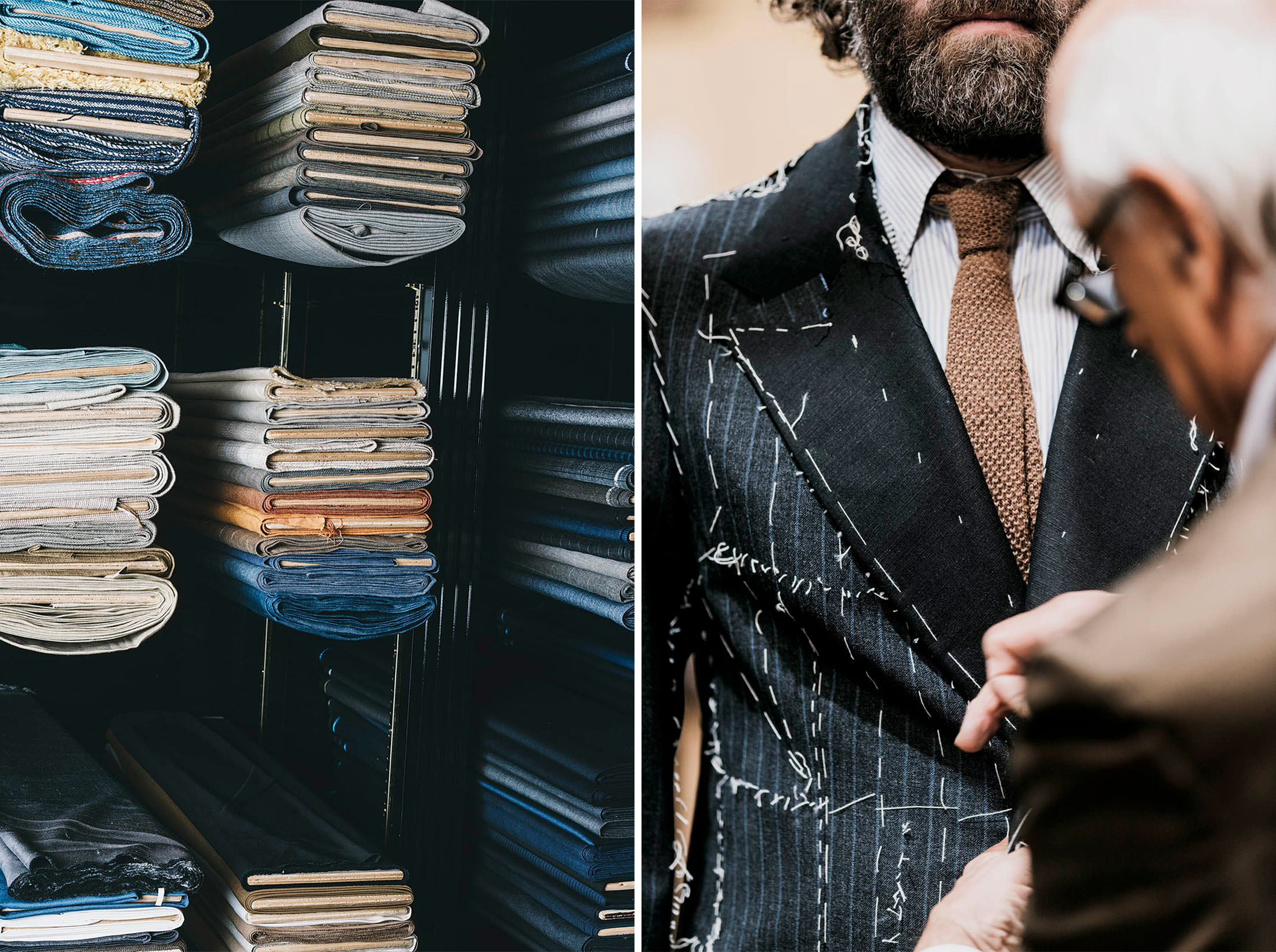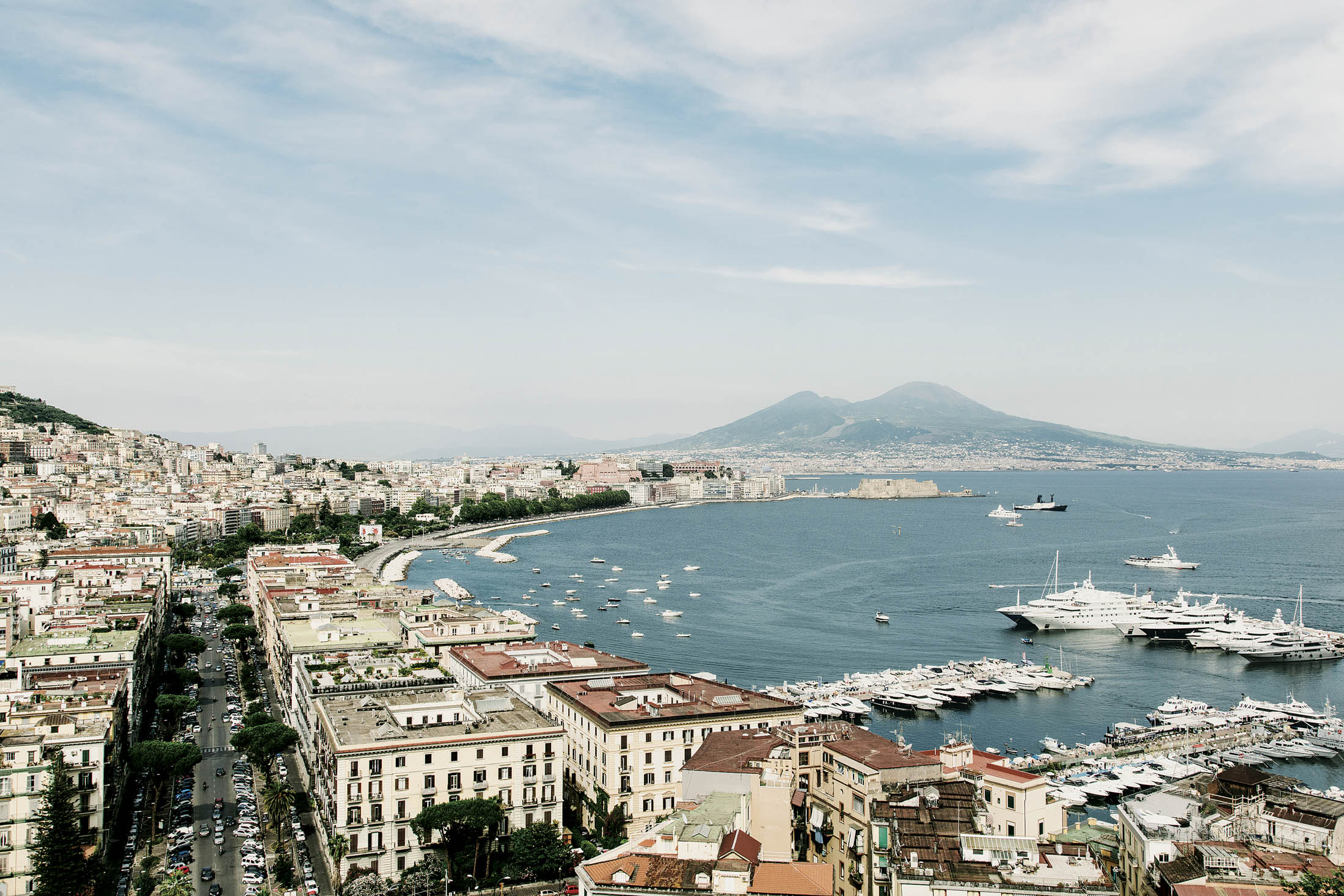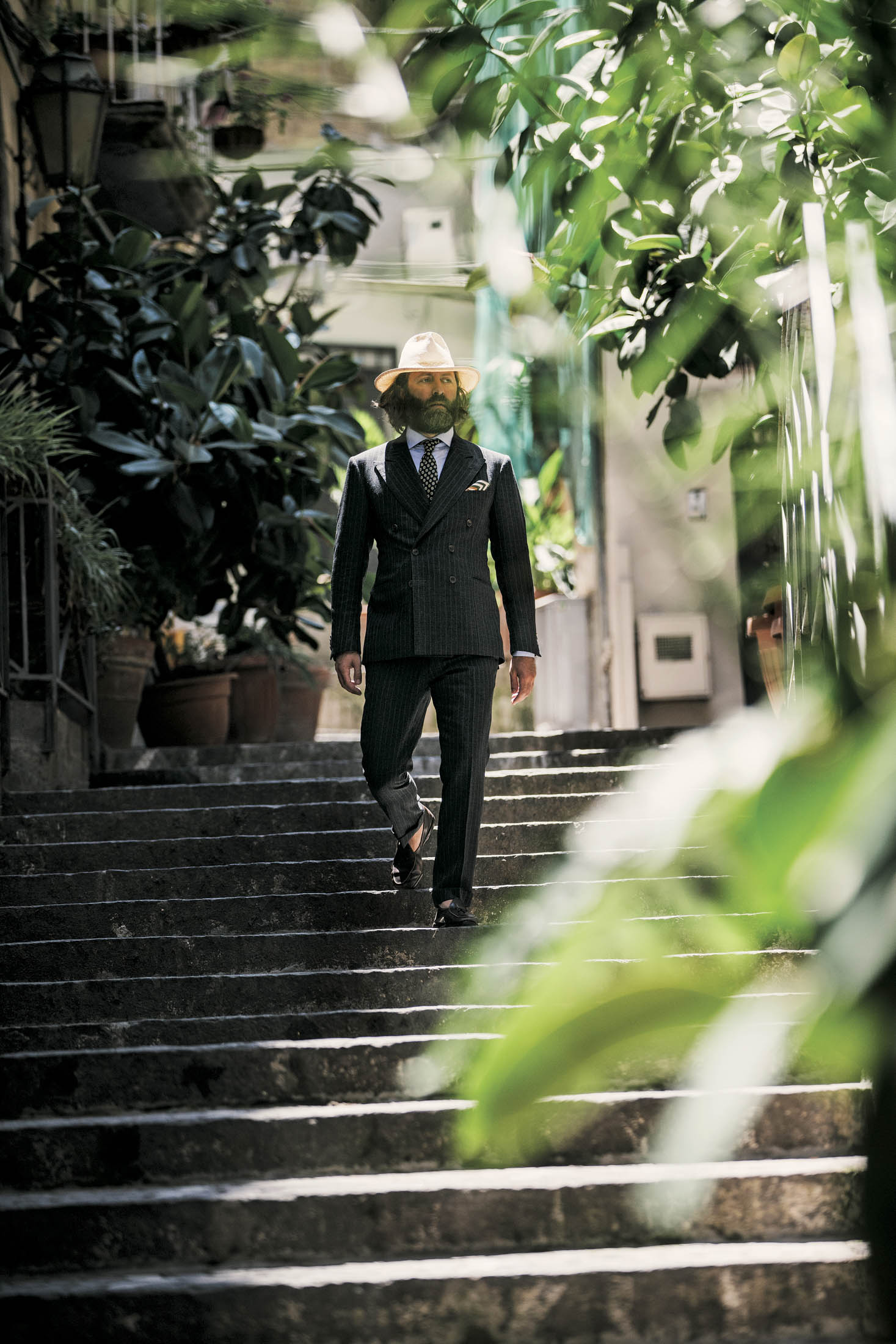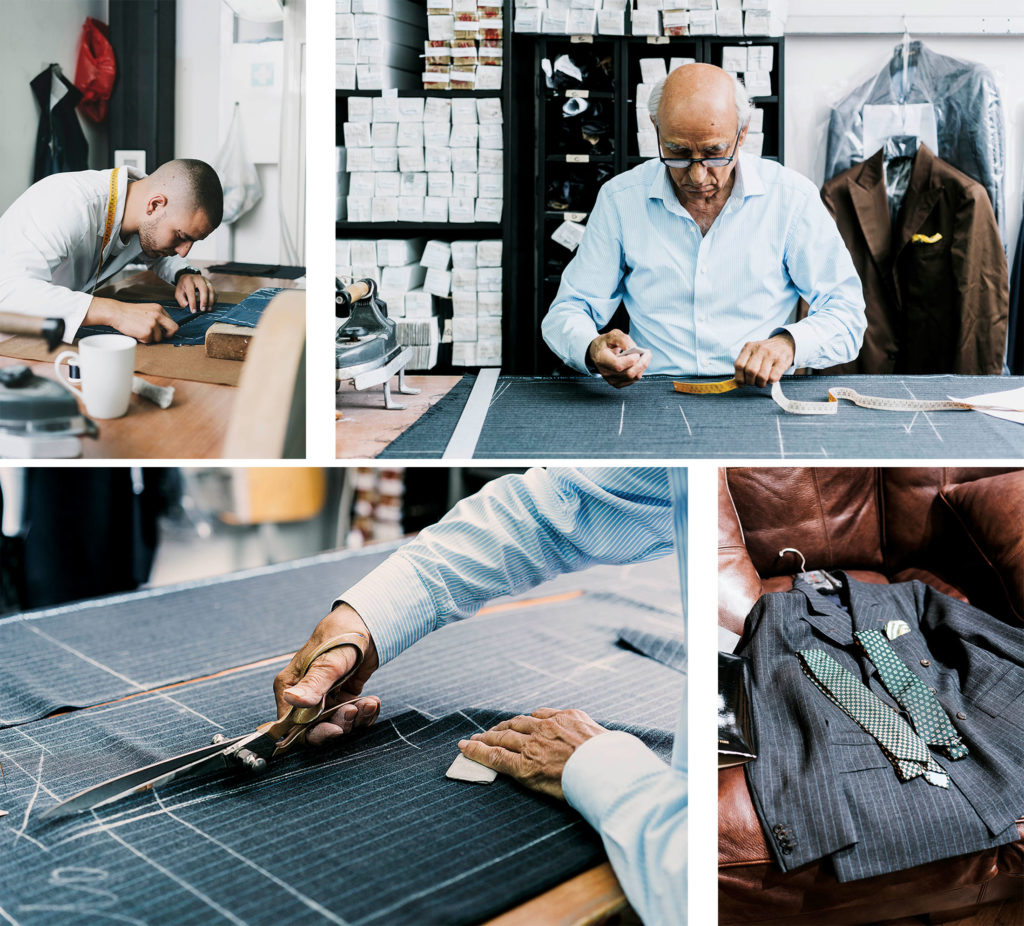Book a private tailor session here
THE LEGENDARY NEAPOLITAN ATELIER WILL MAKE YOU THE SUIT OF A LIFETIME IN JUST ONE WEEK.
Never lie to your tailor. Armed with a tape measure, he knows your body better than you do. He sees it with almost X-ray vision, noting with clinical accuracy that your left arm is an inch longer than your right, or that your right shoulder slopes a half-inch more than your left.
The Rubinacci family has been in the bespoke business since 1932, when Gennaro Rubinacci, an art collector with society connections, established the company, dubbing it “The London House” to remind customers of Savile Row. “Bebè,” as he was known, had a radical idea: to make unstructured, unlined jackets meant to be worn out of the office. He hired tailors to follow his direction and used English fabrics for suits and sport coats that felt entirely new to his Italian customers.

The designs took off, and his clients were some of the most stylish men in the country, including filmmaker Vittorio De Sica and Curzio Malaparte, the journalist whose modernist Capri house was featured in the Jean-Luc Godard film Le Mépris. When Bebè’s son, Mariano, took over in the early 1960s, he renamed the company Rubinacci but continued the London House style. It’s defined by its high armholes (elegant in appearance, comfortable in practice), minimal construction (for a natural fit, as opposed to the more formal British jacket), and coveted soft shoulders.
“I’ve known Mariano Rubinacci for over 30 years and have never seen the firm produce a bad suit,” says G. Bruce Boyer, men’s fashion expert and author of True Style. The company is now run by both Mariano and his son, Luca, who has kept his family’s attention on fabrics—he estimates they have 200,000 feet of vintage cloth in stock.
There are many great suitmakers in Naples—Kiton, Isaia, Cesare Attolini—but Rubinacci sets itself apart in a distinct way. The company can make a bespoke suit, at a starting price of $5,480, in about a week. It’s not something that’s advertised or promoted. Turning around a handmade suit that quickly requires the concerted attention of jacket and trouser cutters who work more than five hours a day over that week on a single suit.
For those put off by the thought of a monthslong series of fittings, this is an answer to prayer. Up a curved cobblestone ramp is a courtyard, where the red awnings say “Rubinacci” and potted plants are set against the stone facade of the ancient building that holds the store and atelier. Inside, the shop is full of bright, colorful silk ties and pocket squares, a vivid reminder of the family’s history in textiles. Upstairs, in a high-ceilinged room with an old-world couch and mirror, are stacks of fabrics. Some are waiting to be made into shirts, but most will become suits.

The measuring process at Rubinacci is a communal activity. Andrea has been making the jackets here for more than a decade. He wears a dark brown peaked-lapel jacket that’s nattier than anything you’ll see at Pitti Uomo. Alessandra Rubinacci, the founder’s granddaughter and my consigliere, oversees the process and translates into English. At many tailors, discussions with the head cutter are very much man-to-man. Not here. Alessandra navigates me through preferred fabrics, cuts, and other design details. She’s worked here since she was 17 and is clearly in her element. “This is my family company,” she says. “Men want to look good for women, anyway.”
Rubinacci makes a smart double-breasted suit—it’s one of Mariano’s staples, a pinstripe version worn with a knit tie—and the house has made six-button, double-breasted jackets since back in Bebè’s day. “It’s an easy, elegant look with that unmistakable Italian attitude and style that men find incredibly appealing,” says Bruce Pask, men’s fashion director at Bergdorf Goodman.
Although Mariano dresses relatively conservatively (at least for an Italian), his son, Luca, is a study in sprezzatura—purple trousers, mixed patterns, velvet Belgian loafers, and wrists covered in string bracelets. He models the company’s suits in its advertisements around Naples, and he also turns up on GQ’s international best-dressed list and style websites such as the Sartorialist.
Traditionally, a double-breasted coat has two decorative buttons on top and bottom, and you use the middle two to fasten the suit, but a few men such as Luca himself have their suits made so that the jacket buttons only at the bottom.
Now a question of fine distinction: Where will it button? Traditionally, a double-breasted coat has two decorative buttons on top and bottom, and you use the middle two to fasten the suit, but a few men such as Luca himself have their suits made so that the jacket buttons only at the bottom. I think, Why not? I’ll do as Luca does.
Alessandra raises an eyebrow. “Are you sure?” she asks. I nod. Andrea takes the bolt of fabric under his arm, and he and Lino climb the set of stairs up to the atelier. The cutting is about to begin, and, like taking clippers to a beard, once you’ve made the first cut there’s no going back.
Two days later, I return for my first fitting to the same cast of characters. I’m given an espresso—this is Naples, after all. The suit is barely held together with what are called basted stitches. It has no lining, no pockets, and will be pulled apart again after I leave, then put back together with the new alterations taken into account. Andrea pulls in and then lets out the jacket from behind, so I can see how it will look at various widths.

But then I realize something I should already have known: I’m no Luca Rubinacci. The buttons haven’t been sewn yet, so as the tailor pins it shut where the button will be, I see that the line of the lapel falls at a steep diagonal across my body, below my waist, down to my hipbone—not near the navel, where most jackets close. It’s almost like wearing a jacket with the ease of a cardigan.
Which is fine for a Neapolitan. But for me it’s a little too expressive, too relaxed, and, well, too Italian. Alessandra seems to sense this. “That’s why we have the first fitting,” she says with a smile. Andrea pins the jacket where the new button will go, and instantly it looks more appropriate. A new chalk mark is made.
I follow Andrea upstairs from the elegant showroom to the atelier, where 20 people work around cutting tables that are specifically large enough to accommodate an unrolled bolt of fabric, the standard measure for all suits. There are large scissors and packs of cigarettes. I’m surprised by how quiet it is. Other than the local radio and some conversation, there’s hardly a sound. It hits me: There are no machines.
Over the course of the week, I frequent Café do Brasil and Caffé Mexico, local favorites. Neapolitan men live and breathe tailoring, and they share their opinions about their tailor (and those they pointedly don’t use) with ease and conviction. I meet more than one man who will buy a good bolt of fabric when he sees one and then take it to his shirtmaker. E. Marinella, a tiemaker on the Riviera di Chiaia, opens at 6:30 a.m., so men can pick one up on the way to work.

Two days later, my suit is almost done. Rubinacci can make a suit without the second fitting, but it’s a good idea to have one. The buttons are sewn; the lapels are cut. I admire the handwork visible in the buttonholes—they stand up higher, and each stitch can be seen individually—as opposed to the uniform, flat feel of machine-made ones.
Exactly one week after arriving in Naples, I’m standing in the courtyard wearing the final product. It’s surprisingly cool, despite the heat. I thank Andrea for his work. He seems to enjoy seeing the link between his skill and a man heading out into the world, even though I may not have been as daring as a true Neapolitan such as Luca. But, as he says, “When a gentleman comes to Rubinacci, we try to discover the style he has inside.”
